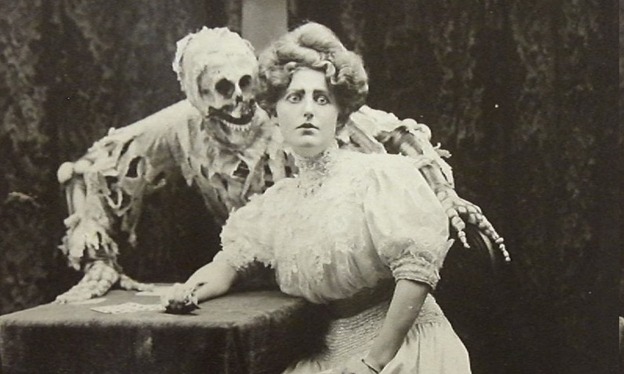 Andrea Cefalo is a Medieval fiction author and history blogger. Her debut novel The Fairytale Keeper, was a quarter-finalist in Amazon’s 2013 Breakthrough Novel Contest. The sequel–The Countess’s Captive—was published earlier this year. She is currently working on the third book in her series.
Andrea Cefalo is a Medieval fiction author and history blogger. Her debut novel The Fairytale Keeper, was a quarter-finalist in Amazon’s 2013 Breakthrough Novel Contest. The sequel–The Countess’s Captive—was published earlier this year. She is currently working on the third book in her series.
From undergoing surgery to having botox injected into their faces, some modern women go to risky lengths for beauty. Victorian women did the same. Unfortunately for them, agencies like the FDA didn’t exist, and women often didn’t know the dangers or even the contents of their cosmetics. While some makeup and tricks from the Victorian Era were harmless, the lack of regulation led women to venture down some dangerous avenues—all for the sake of beauty. As promised, here is the final article in my two-part series on deadly Victorian beauty trends. Click here to read the first part.
- Bathing in Arsenic
Once again the struggle for the perfect complexion led Victorian women to extremes. According to expert Alexis Karl, rumors emerged of women in Bavaria soaking in arsenic baths to keep their skin pristinely white. While bathing in arsenic is not nearly as deadly as ingesting it, bathing in water containing more than 500 parts per billion of the toxic element is highly discouraged as it can exacerbate the symptoms it was meant to cure, such as irritation and redness.
Perhaps more dangerous were the fumes rising from the warm waters. According to the EPA, chronic inhalation of arsenic fumes poses a wide range of health risks from pharyngitis to lung cancer.
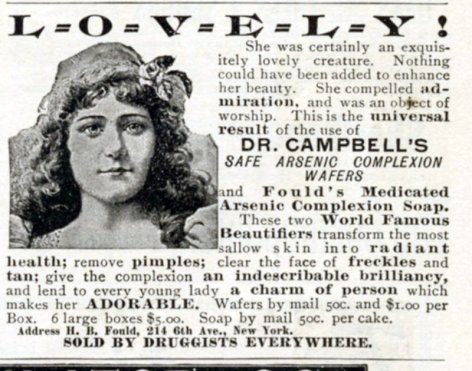
Predatory companies led Victorian Women to believe ingesting and soaking in arsenic would clear their skin.
2. Polishing Teeth with Cocaine and Boars’ Hair
By the 1870s, women had access to Colgate toothpaste-though it would be another sixty years before anyone used a nylon toothbrush, which DuPont invented in 1938. Like modern Americans, Victorian women desired clean white teeth and healthy gums, but to keep their smiles looking pearly they used tooth powders rather than paste. According to Mary Rose at Everyday Goth, prior to 1870, the tooth powders were often made at home and recipes varied. Some “called for a drop or two of cocaine to be mixed in.” This may have been to help with pain as cocaine will numb the gums. Today, anyone with a middle-school education knows cocaine has a long list of terrible long and short-term side-effects.
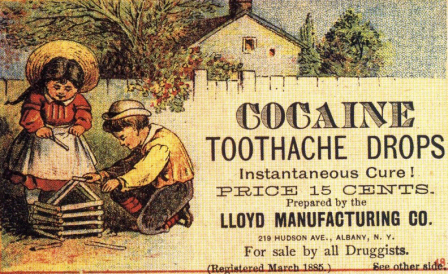
By the time dentists realized the dangers of cocaine, it was already available to the public.
The man who introduced cocaine into dentistry-William Haldsted-witnessed this first-hand. While the powerful anesthetic revolutionized dentistry, cocaine caused addictions. Haldsted and his colleagues abused the drug. All but one of his colleagues died, so chemists sought an alternative and introduced Novocain in 1905, which quickly replaced cocaine as a local anesthetic.
During the Victorian era, tooth powder recipes varied and just the thought of some of their ingredients will leave a bitter taste on most tongues. In her book, How to Be a Victorian, Ruth Goodman states that soot, chalk, coral, alum, powdered cuttlefish, myrrh, and camphor were commonly used to clean teeth. After trying the different recipes, (Yes, she actually tried them.) Ms.Goodman said she preferred tooth powders made with soot over the other ingredients.
So how exactly did Victorian women apply their tooth powders and scrub the grime from their teeth, you ask? Some women polished their teeth with cloth, others used toothbrushes with bristles made of boars’ hair. For certain, the hairs were cleaned before the toothbrushes were used, but the idea of cleaning teeth with something that may have been rolling in feces at one point is unsavory to say the least.
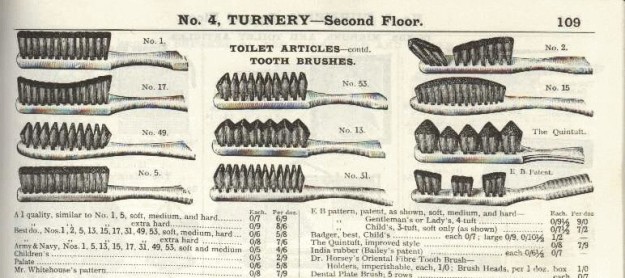
This advertisement shows the variety of toothbrushes available during the Victorian era. They were often made of animal hair.
- Waist Training with Corsets
Though corsets have been around for centuries, women used them to their most dramatic effect during the Victorian Era to achieve the ideal hourglass figure. An examination of corsets on display in French and English museums show the average waist size of a Victorian corset-wearer was twenty-two inches (which is ten inches fewer than today’s average). Women weren’t the only ones wearing corsets during the nineteenth century. Men, like England’s King George IV, sported the contraption as well and suffered the consequences. In 1821, the constriction of his taut “body belt” nearly caused the king to faint.
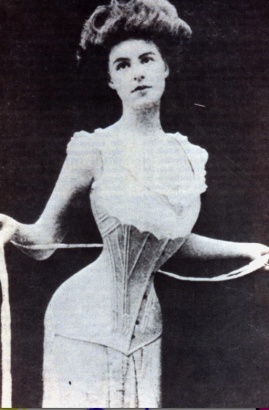
Corsets narrowed the waists of Victorian women. The average diameter (twenty-two inches) was ten fewer inches than today.
Shockingly this beauty trend has made a recent comeback despite its possible dangers. To see how corsets affected internal organs, famous physician and talk show host Dr. Oz asked an avid waist trainer to have an MRI. The results were shocking. When his patient donned a corset, her diaphragm was pushed up two inches and other major organs (liver, kidneys, stomach, and intestines) were shoved upward, as well. The compression on her rib cage left a noticeable ridge-shaped imprint on the liver.
Today, many physicians suspect waist training can cause a wide range of complications like pneumonia, constipation, raised blood pressure, acid reflux, and fainting. But is waist-training deadly?
To answer that question, American anthropologist Rebecca Gibson studied the remains of ten female skeletons from the Victorian and Georgian Eras. As predicted, the rib cages and spines of the corset-wearing women were similarly deformed. But it seems the long-term effects of extreme cinching might not be as deadly as we think. In fact, most of these women met or exceeded the average life expectancy.
4. Squirting Lemon Juice Or Belladonna Juice in the Eyes
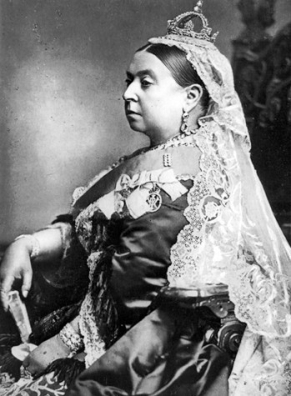
Rather than have surgery for her cataracts, Queen Victoria turned to belladonna to dilate her pupils so she could see.
Victorian women believed eye drops with strange ingredients, like lemon and orange juice, kept their eyes clean and bright. Anyone who loves a splash of lemon in their water has probably accidentally squirted a bit of the juice in their eyes once or twice. It’s not a pleasant experience and often causes redness and irritation. According to ear, nose, and throat specialist Dr. Drew Ordon, these eye drop could also cause corneal abrasions and blindness.
On top of wanting their eyes clean, women longed for large dilated pupils. To create the effect, they turned to eye drops made of belladonna, a well-known poison. Fortunately, belladonna is rarely deadly when used as an eye drop, though ingesting it is extremely dangerous. In her older years, Queen Victoria used the drops as an alternative to cataract surgery. While they certainly didn’t rid her of cataracts, the belladonna dilated her pupils so she could see.
Today, ophthalmologists rely on the drug to treat infections and perform eye exams. Long-term use of the drug is not recommended and can result in a lethal overdose. Immediate side effects include irritation, blurred vision, and light sensitivity. Rarely, belladonna drops cause dizziness, fainting, irregular heartbeat, difficulty breathing, and sudden mood changes.
5. Hiding Blemishes With Lead Face Pastes and Powders
To cover unsightly blemishes and scars, women turned to face paints and powders. Some of these concoctions were rather mild, containing ingredients like rice powder, zinc oxide, or the extremely expensive blend of chloride of bismuth and talc. Others were made of lead flakes. Not only is lead highly toxic, it is easily absorbed through the skin. Side effects of lead poisoning include headache, constipation, memory loss, pain and numbness, and if ingested in large enough quantities, will cause paralysis and death.
Like several other Victorian beauty techniques, lead cosmetics often caused problems it was meant to remedy. Combining lead face powders and paints with corrosive washes resulted in wounds and scars. Women tried to hide the blemishes beneath heavier layers of lead makeup, which made the problem worse. These thick layers of make-up cracked like porcelain if a woman was too expressive. Since women were expected to be naturally beautiful during the era, appearing at a social event with cracking face paste would have been extremely mortifying.
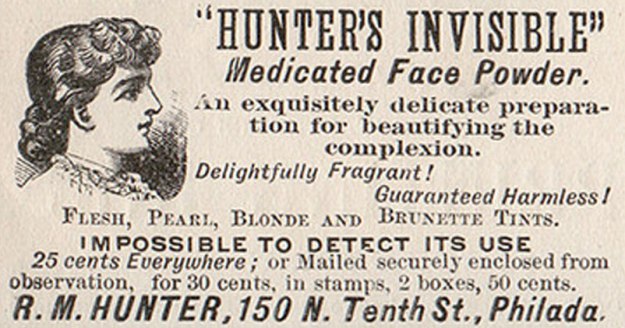
Though face powders like this one claimed to be harmless, women rarely knew the ingredients.
Works Cited:
Rob, Alice. “The Deadly Risks of a Victorian Beauty Regime.” Women in the World in Association with The New York Times WITW. The New York Times, 28 Nov. 2015. Web. 21 Jan. 2016.
“Arsenic Compounds.” Arsenic Compounds. United States Environmental Protection Agency, Dec. 2012. Web. 28 Jan. 2016.
